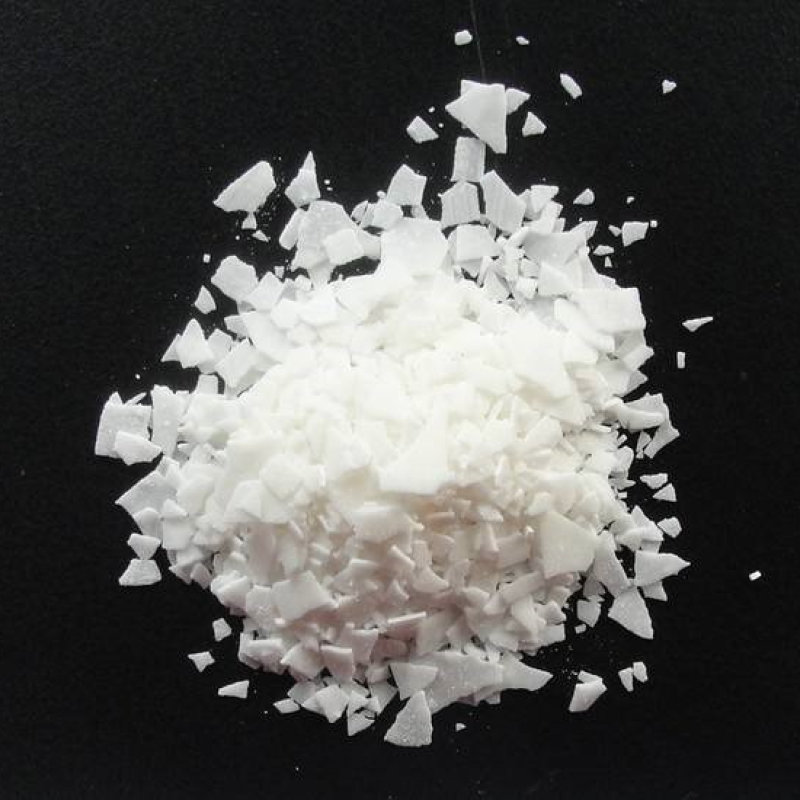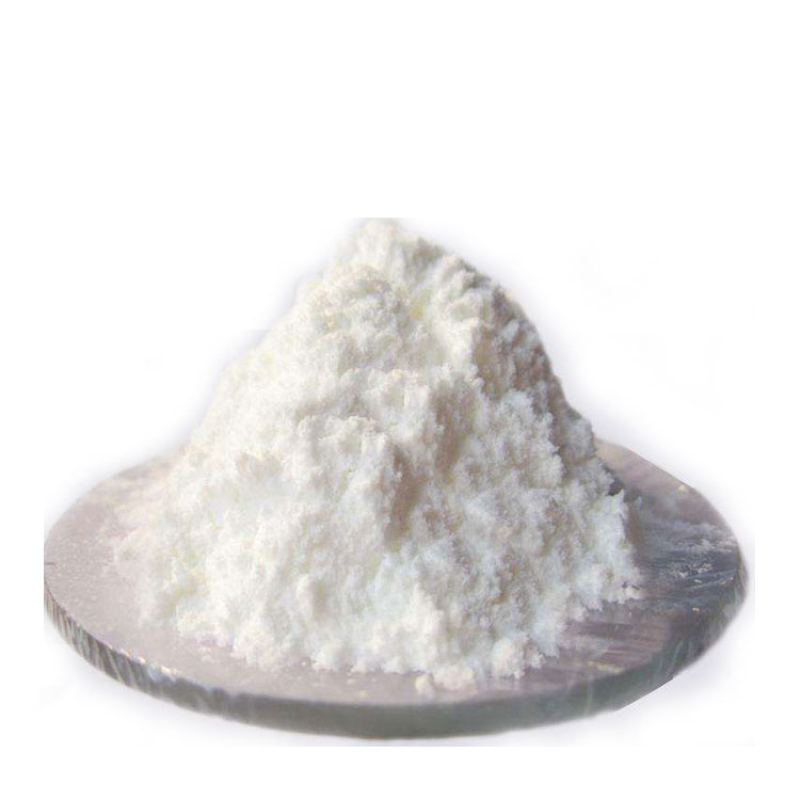Products Description of 2,5-Furandicarboxylic acid CAS#3238-40-22,5-Furandicarboxylic acid is a derivative of furan. This organic compound was first obtained by Fittig and Heinzelmann in 1876. 2,5-Furandicarboxylic acid is a chemical intermediate with strong sensitivity and good stability. It is soluble in water under alkaline conditions and is a white powdery solid under acidic conditions. It is an important monomer for the preparation of corrosion-resistant plastics.
Contact Now
Products Description of Methanedisulphonic acidCAS#503-40-2Methyl disulfonic acid is an important fine chemical product.
Contact Now
Products Description of 3-Acetyl-2,5-Dichlorothiophene CAS#36157-40-13-Acetyl-2,5-dichlorothiophene is an organic intermediate and pharmaceutical intermediate. 3-Acetyl-2,5-Dichlorothiophene Chemical PropertiesMelting point 37-40 °C (lit.)Boiling point 120-122°C 4mmdensity 1.4514 (estimate)Fp >230 °Fstorage temp. Keep in dark place,Inert atmosphere,2-8°Cform solidcolor White to Yellow to OrangeBRN 121288CAS DataBase Reference36157-40-1(CAS DataBase Reference)NIST Chemistry Reference2,5-Dichloro-3-thienyl methyl ketone(36157-40-1)Sa
Contact Now
Products Description of Cocamidopropyl betaine CAS#61789-40-0Cocamidopropyl betaine is a mixture, generally containing several main ingredients in different contents: decylamidopropyl betaine (abbreviated as C10), lauramidopropyl betaine (abbreviated as C12), myristamidopropyl betaine (abbreviated as C14), palmitamidopropyl betaine (abbreviated as C16), stearamidopropyl betaine (abbreviated as C18), etc.Cocamidopropyl betaine Chemical PropertiesBoiling point 104.3℃[at 101 325 Pa]vapor pressure 0Pa at 25℃storage temp. Refrigeratorsolubility Methanol (Sparingly), Water (
Contact Now
Products Description of 2,5-Dimethyl-2,5-hexanediolCAS#110-03-2This product is white crystal, m.p.88.5~90℃, b.p.214~215℃, relative density 0.898, soluble in water, acid, alcohol, acetone, insoluble in benzene, carbon tetrachloride and other organic solvents2,5-Dimethyl-2,5-hexanediol Chemical PropertiesMelting point 86-90 °C (lit.)Boiling point 214-215 °C (lit.)density 0,898 g/cm3vapor pressure 0.18Pa at 20℃refractive index 1.4429 (estimate)Fp 126 °Cstorage temp. Keep in dark place,Sealed in dry,Room Temperaturepka15.07±0.29(Predicted)form Crystalli
Contact Now
Products Description of KCL CAS#7447-40-7Potassium chloride is an important fertilizer for plant growth. It has a fast fertilizer effect and can be absorbed by the soil. It is not easy to lose. Applying an appropriate amount of potassium fertilizer can make the stems of crops grow firm, prevent lodging, promote flowering and fruiting, and enhance the ability to resist drought, cold, diseases and pests. Therefore, it is of great significance to agricultural high yield.
Contact Now
1,4-Benzenedicarboxylic Acid, Compds. With Polyisobutenyl Succinic Anhydride-Tetraethylenepentamine Reaction Products CAS:68909-40-0Good dispersibility: It can be effectively dispersed in various solvents and matrices, which helps to improve the uniformity and stability of the product. Excellent thermal stability: It can maintain its stable performance at higher temperatures and is suitable for some high-temperature application scenarios.
Contact Now
Products Description of (2S)-(+)-2,5-Dihydro-3,6-dimethoxy-2-isopropylpyrazine CAS#78342-42-4(S)-2,5-Dimethoxy-3-isopropyl-3,6-dihydropyrazine.Molecular formula: C9H16N2O2.Molecular weight: 184.24 g/mol(2S)-(+)-2,5-Dihydro-3,6-dimethoxy-2-isopropylpyrazine Chemical Propertiesalpha 102 º (c=1%, EtOH)Boiling point 245.2±33.0 °C(Predicted)density 1.028 g/mL at 20 °C (lit.)storage temp. Sealed in dry,2-8°Csolubility Chloroform (Slightly), DMSO (Slightly), Ethanol (Sparingly), Methanol (Slightly)pka3.81±0.60(Predicted)form Liquidcolor Clear colorless to pale
Contact Now
Products Description of Diethyl Sebacate CAS#110-40-7Colorless to slightly yellow liquid with aroma of wine, fruit and melon. Boiling point is 302~C, melting point is 1~3℃.
Contact Now
Products Description of Meglumine CAS#6284-40-8MeglumineChoosing a suitable counter ion for a drug is particularly important for improving the solubility and bioavailability of the drug. Meglumine (N-methyl-D-glucosamine, MChemicalbookeglumine) is a counter ion widely used to improve the solubility of drugs.
Contact Now
Products Description of 2,5-Dimethyl-2,4-Hexadiene CAS#764-13-62,5-Dimethyl-2,4-hexadiene is a chemical,Insoluble in water, soluble in alcohol and ether.2,5-Dimethyl-2,4-hexadiene Chemical PropertiesMelting point 12 °CBoiling point 132134°Cdensity 0.773 g/mL at 25 °C(lit.)vapor density 3.8 (vs air)vapor pressure 26.9 mm Hg ( 37.7 °C)refractive index n20/D 1.476(lit.)Fp 85 °Fstorage temp. Flammables areasolubility Chloroform, Ethyl Acetateform Oilcolor Clear ColourlessBRN 1733342LogP3.500CAS DataBase Refer
Contact Now
Products Description of 2,5-Dibromothiophene CAS#3141-27-32,5-Dibromothiophene is the light yellow transparent liquid, boiling point 211℃, melting point -6℃, relative density 2.147.2,5-Dibromothiophene Chemical PropertiesMelting point -6 °C (lit.)Boiling point 211 °C (lit.)density 2.147 g/mL at 25 °C (lit.)refractive index 1.627-1.63Fp 99 °Cstorage temp. Keep in dark place,Sealed in dry,Room Temperaturesolubility Chloroform, Methanolform Liquidcolor Clear pale yellow to brownSpecific Gravity2.147Water Solubility practically insol
Contact Now
Products Description of 1-(2,6-Dichlorophenyl)indolin-2-one CAS#15362-40-0Used as the intermediate of diclofenac1-(2,6-Dichlorophenyl)indolin-2-one Chemical PropertiesMelting point 115-119°CBoiling point 488.6±45.0 °C(Predicted)density 1.432±0.06 g/cm3(Predicted)storage temp. Sealed in dry,2-8°Csolubility Chloroform (Slightly), Methanol (Slightly)pka-4.85±0.20(Predicted)color Off-White to Light BrownBRN 1538309Stability:StabilityCAS DataBase Reference15362-40-0(CAS DataBase Reference)Safety InformationSafety Statements 24/25WGK Germany 3RTECS&n
Contact Now
Products Description of Dodecane CAS#112-40-3Colorless liquid. Melting point -9.6℃ (-12℃), boiling point 216.3℃, 145℃ (13.3kPa), 91.5℃ (1.3kPa), relative density 0.7487 (20/4℃), refractive index 1.4216, flash point 71℃.
Contact Now
Products Description of 2,5-Dimethoxybenzaldehyde CAS#93-02-72,5-Dimethoxybenzaldehyde is a colorless crystal produced by methylation reaction with dimethyl sulfate in an alkali aqueous solution.2,5-Dimethoxybenzaldehyde Chemical PropertiesMelting point 46-48 °C (lit.)Boiling point 146 °C/10 mmHg (lit.)density 1.1708 (rough estimate)refractive index 1.5260 (estimate)Fp >230 °Fstorage temp. Keep in dark place,Sealed in dry,Room Temperaturesolubility 795mg/lform Crystalline Powder, Crystals and/or Chunkscolor Yellow to beigeWater Solubili
Contact Now
Products Description of Allylbenzene CAS#300-57-2Allylbenzene is an organic compound, a colorless liquid. Melting point -40℃, boiling point 156℃, flash point 33℃, relative density (20/4℃) 0.8920, refractive index 1.5131.
Contact Now
2-DODECEN-1-YLSUCCINIC ANHYDRIDE CAS#19780-11-1Product Name:2-DODECEN-1-YLSUCCINIC ANHYDRIDESynonyms:2,5-Furandione, 3-(2-dodecenyl)dihydro-;2,5-Furandione, 3-dodecenyl-;3-(2-dodecenyl)dihydro-5-furandione;3-[(2E)-2-Dodecenyl]dihydro-2,5-furandione;3-(2-dodecenyl)succinic anhydride;2-(2-Dodecene-1-yl)succinic anhydride;2-(2-Dodecenyl)succinic anhydride;2-Dodecen-1-yl(-)succinicanhydridCAS:19780-11-1MF:C16H26O3MW:266.38EINECS:243-296-9Product Categories:Carbonyl Compounds;Carboxylic Acid Anhydrides;Organic Building Blocks;Anhydride MonomersUnsaturated fatty acids and derivatives;Monoenoic fatty
Contact Now
Products Description of 2,5-Bis(5-tert-butyl-2-benzoxazolyl)thiophene CAS#7128-64-5This product is yellow-green powder. Melting point 200-201℃, decomposition temperature greater than 220℃. Insoluble in water, soluble in alkanes, fats, mineral oils, waxes and common organic solvents. Solubility/(g/100ml): methanol 0.05; acetone 0Chemicalbook.5; toluene 5.3; carbon tetrachloride 5.9; tetrahydrofuran 5.5; DMF 0.8; chlorobenzene 10.2; cyclohexane 3.3; xylene 5.5; dioctyl phthalate 0.7; water 0.01.
Contact Now
Products Description of Trimesic acid CAS#554-95-0Trisproic acid is in the form of white to slightly yellow crystalline powder. Solubility: easily soluble in ethanol, soluble in ether, and soluble in 40 parts of water at 23°C.
Contact Now
Products Description of 2-Lodothiophene CAS#3437-95-42-Lodothiophene is a colorless liquid with a melting point of -40°C and a boiling point of 80-81°C (2.67 kPa).2-Lodothiophene CAS#3437-95-4 Chemical PropertiesMelting point -40 °C (lit.)Boiling point 73 °C/15 mmHg (lit.)density 1.902 g/mL at 25 °C (lit.)refractive index n20/D 1.651(lit.)Fp 160 °Fstorage temp. 2-8°Cform LiquidSpecific Gravity1.902color Clear yellow-green to red-brownSensitive Light SensitiveBRN 104666InChIKeyROIMNSWDOJCBFR-UHFFFAOYSA-NCAS DataBase Reference3437-
Contact Now
Products Description of Dinonylnaphthalenesulfonic acid CAS#25322-17-2Dinonylnaphthalenesulfonic acid is a chemical substance with the molecular formula C28H44O3S.Dinonylnaphthalenesulfonic acid Chemical PropertiesBoiling point 94-99 °Cdensity 0.852 g/mL at 25 °Crefractive index n20/D 1.465Fp 30 °Fstorage temp. 2-8°Csolubility H2O: insolubleCAS DataBase Reference25322-17-2(CAS DataBase Reference)EPA Substance Registry SystemNaphthalenesulfonic acid, dinonyl- (25322-17-2)Safety InformationHazard Codes F,Xn,NRisk Statements&nb
Contact Now
Products Description of 2,7-naphalenedisulfonic acid CAS#1655-35-2 Sodium 2,7-naphthalene disulfonate, white powder, is mainly used in organic synthesis and dye industry.2,7-Naphthalenedisulfonic acid disodium salt Chemical Propertiesform powder to crystalcolor White to Light yellow to Light orangeCAS DataBase Reference1655-35-2(CAS DataBase Reference)EPA Substance Registry System2,7-Naphthalenedisulfonic acid, disodium salt (1655-35-2)Safety InformationHazard Codes XiRisk Statements 36/37/38Safety Statements 37/39-26Hazard Note IrritantHS Code 2904
Contact Now
Products Description of 2-chlorobenzoic acid CAS#118-91-22-Chlorobenzoic acid, almost white coarse powder. The melting point is 142℃, and the density (20℃) is 1.5449/m3.
Contact Now
Products Description of 2-Thiophenecarboxylic acid CAS#527-72-02-Thiophenecarboxylic acid is a kind of colorless crystal.
Contact Now


































